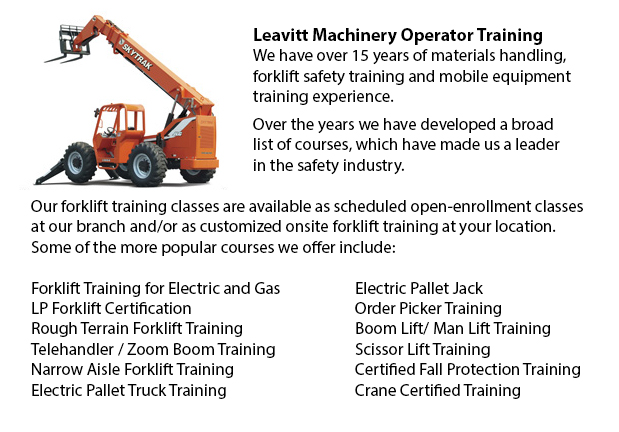
Telehandler License Avondale - The telehandler or telescopic handler is a frequently used machine in industrial and agricultural applications. This particular machine is the same in appearance to a forklift and even works in a similar way, although telehandlers are much more like a crane than forklift. It has a telescopic boom that could lengthen forward and upward from the vehicle. The boom has the capability to fit one of various attachments including pallet forks, a bucket, a lift table or muck grab.
The most popular telehandler attachments are pallet forks. The telehandler is utilized to transfer products in sites where the loads cannot be transported by a conventional forklift. Telehandlers are specially helpful for placing loads on rooftops for instance, or for removing palletized cargo from with a trailer. Many of the tasks that a telehandler can accomplish would otherwise require a crane and this piece of equipment can be expensive, not always time efficient and not practical.
Since the boom extends or raises while bearing a load, it likewise acts as a lever. Despite the counterweights in the rear, this causes the machine to become more and more unbalanced; hence, the advantage of the telehandler is really its greatest limitation. As the working radius increases, the lifting capacity decreases. The working radius is defined as the distance between the front of the wheels and the center of the load.
Like for instance, a telehandler with a 5000 lb capability with the boom retracted could safely lift as little as 400 lb once it is fully extended at a low boom angle. The equivalent equipment which has a 5000 lb lift capacity and the boom retracted can support as much as 10,000 lb with the boom raised to 70 degrees. The operator has a load chart to help determine whether a specific lifting job could be done in an efficient and safe manner. This particular chart takes into consideration the weight, height and the boom angle.
Lots of telehandlers come outfitted together with a computer that uses sensors so as to monitor the motor vehicle. These sensors would alert the operator and some are capable of cutting off further control input if the limits of the vehicle are exceeded. Several telehandler models are also outfitted along with front outriggers that are known as mobile cranes. These greatly extend the lifting capacity of the machinery while it is stationary.
-
Forklift Certification Courses Avondale
Forklift Certification Courses Avondale - Forklift certification courses really help to be able to make sure that companies using forklifts, follow the local and regional rules. The drivers of the forklift need to go through forklift certification pr... More -
Manlift Certification Avondale
Manlift Certification Avondale - The Elevated Platforms and Manlifts Certification course helps to provide the required training on the work practices, safe operating procedures, rules and regulations regarding the daily activities for the operators... More -
Manlift Operator Training Avondale
Manlift Operator Training Avondale - The aerial lift or manlift is a specialized type of hydraulic platform that is intended to hoist a person vertically giving it an alternate name of a vertical personnel lift. These machinery are widely used for a... More -
Telescopic Training Avondale
Telescopic Training Avondale - Telescopic Handlers are a type of forklift, normally called telehandlers. This machine has been increasing in popularity because of its greater lift heights and its versatility. It is often preferred over the convention... More -
Heavy Equipment Training Avondale
Heavy Equipment Training Avondale - The two most common types of heavy equipment training are classed into the categories of equipment; equipment that is fashioned with rubber tires or those with tracks. The tracked vehicle are heavy duty equipment l... More -
Aerial Lift Train the Trainer Avondale
Aerial Lift Train the Trainer Avondale - The Aerial Lifts Train the Trainer Certification Program would teach trainers how to efficiently train operators in safe industrial mobile equipment operation. Trainers are provided with in-depth instruction a... More -
Overhead Crane Safety Training Avondale
Overhead Crane Safety Training Avondale - The overhead crane safety training program is meant to equip the operators with the right knowledge and skills in the areas of: crane safety measures, accident avoidance, materials handling, and stock and equ... More -
Heavy Equipment Training Schools Avondale
Heavy Equipment Training Schools Avondale - When choosing an operator training course, there are numerous heavy equipment training schools to select from. In order to ascertain the qualifications you would attain, it is very important to check some a... More

Forklift Training Avondale
TOLL FREE: 1-888-254-6157
Avondale, Arizona
forkliftcertificationavondale.com
Email Us
About Us


